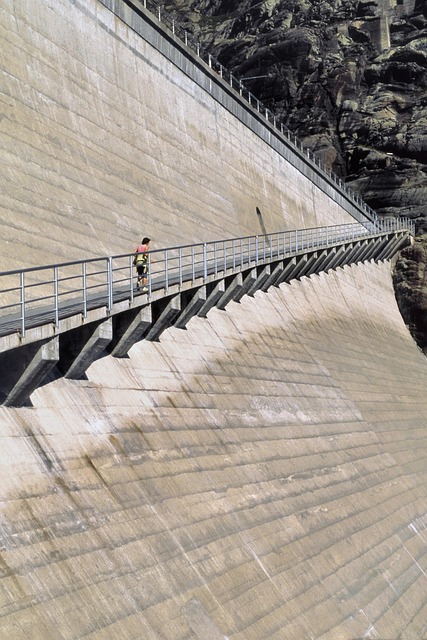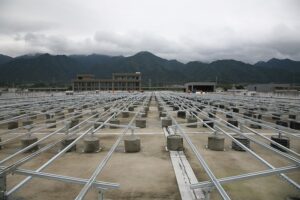
The Future of Clean Energy: Transforming Our World One Solution at a Time
As the specter of climate change looms larger, the need for clean energy solutions has become imperative. The shift from fossil fuels to renewable energy has initiated a transformative movement across the globe. Clean energy not only addresses the environmental crisis but also signals a new era of technological innovation and economic opportunity.
The Current Energy Landscape
The world’s energy consumption predominantly relies on fossil fuels, which account for around 80% of global energy use. This dependence on coal, oil, and natural gas results in significant carbon emissions, contributing to global warming and environmental degradation. However, numerous countries are beginning to pivot towards cleaner energy practices, focusing on sustainability and reduced ecological footprints.
Solar, wind, hydroelectric, and geothermal energies are emerging as viable alternatives that promise to reshape our energy landscape. This transition is not just a matter of environmental stewardship; it also represents a pivotal economic opportunity for nations willing to invest in the technologies of the future.
Solar Energy: Harnessing the Sun’s Power
Solar energy is one of the fastest-growing sectors in the clean energy spectrum. Thanks to advancements in photovoltaic technology and the decrease in manufacturing costs, solar panels have become more accessible and efficient. Modern solar technologies can convert sunlight into electricity with remarkable efficacy, and solar farms are being established across the globe.
In addition to large-scale solar parks, residential solar installations are surging. Homeowners are now more empowered to generate their own electricity, thanks to government incentives and financing options. This not only reduces utility bills but also promotes energy independence, giving individuals control over their energy production.
Wind Energy: Harnessing the Gales
Similarly, wind power is witnessing unprecedented growth, particularly in regions with favorable wind conditions. Wind turbines are now a common sight, both onshore and offshore. The scalability of wind energy makes it an attractive option for utility providers, with massive wind farms capable of producing large amounts of electricity.
Technological innovations such as vertical axis wind turbines and floating offshore wind farms are expanding the possibilities in this sector. Furthermore, the integration of smart grid technologies and energy storage solutions allows wind energy to become more reliable and available even when the wind isn’t blowing.
Hydroelectric Energy: Flowing Towards Sustainability
Hydropower continues to be one of the most utilized forms of renewable energy globally, contributing to roughly 16% of the world’s electricity supply. Large dams have historically played a significant role in energy production, but innovations in small-scale and run-of-the-river hydroelectric systems are gaining traction.
The flexibility and adaptability of hydroelectric systems allow them to provide energy in a variety of settings, from remote communities to urban centers. Beyond electricity generation, hydropower is crucial for water resource management, flood control, and ecological restoration.
Geothermal Energy: The Earth’s Heat
Geothermal energy is often overlooked but represents a stable and reliable form of clean energy. By tapping into the Earth’s internal heat, geothermal power plants can provide a constant energy supply. This energy source is harnessed in various ways, from geothermal power plants to ground-source heat pumps for residential heating and cooling.
Countries like Iceland and the Philippines are leading the way in utilizing geothermal energy, showing the potential this resource holds for energy production and economic development. As technology advances, the feasibility of geothermal energy in other regions will likely expand, paving the way for increased adoption worldwide.
Energy Storage: The Key to Reliability
As the reliance on intermittent renewable energy sources grows, energy storage becomes crucial. Battery technology plays a pivotal role in helping to balance the grid by storing excess energy generated during peak production times and releasing it when demand is high. Lithium-ion batteries have dominated the market, especially in electric vehicles and home energy systems.
Moreover, the development of alternative storage solutions, such as flow batteries, compressed air energy storage, and even innovative approaches like pumped hydro storage, are gaining momentum. These advancements enable more efficient energy management and enhance the reliability of clean energy sources.
Decentralization and Microgrids: Local Solutions
Decentralization of energy production is another critical aspect of the future of clean energy. Microgrids can operate independently or in conjunction with the central grid, providing localized energy solutions. This flexibility is particularly valuable in remote or underserved areas, where connecting to the main grid may be impractical or costly.
By integrating local renewable energy sources—such as solar panels or small wind turbines—communities can achieve energy self-sufficiency and actively participate in the transition to a sustainable energy future. This approach not only reduces reliance on fossil fuels but also fosters community resilience against energy disruptions.
The Role of Policy and Investment
For clean energy solutions to flourish, supportive policies and investments are essential. Governments around the world are beginning to set ambitious targets for reducing carbon emissions and increasing renewable energy usage. Policies that promote research and development, subsidies for renewable technologies, and carbon pricing are crucial in driving the clean energy transition.
Private investment has also seen significant growth in the clean energy sector. Venture capital firms and corporate investments are increasingly targeting startups focused on innovative energy solutions, reflecting a shift in market dynamics. The blend of public and private investment is creating an environment ripe for pioneering technologies that could redefine our energy landscape.
Challenges and Opportunities
While the future of clean energy holds tremendous promise, several challenges need addressing. Energy infrastructure, regulatory frameworks, and market barriers can hinder progress. The transition to clean energy requires adapting existing systems and embracing innovative approaches to energy production and consumption.
Furthermore, societal acceptance plays a significant role in the adoption of clean energy technologies. Education and awareness campaigns can illuminate the benefits of renewable energy, dispelling myths and encouraging community involvement in the transition process.
The Path Ahead: Collaboration and Global Engagement
A successful transition to a clean energy future necessitates collaboration among governments, businesses, and communities worldwide. Initiatives like the Paris Agreement underscore the collective responsibility to address climate change and promote sustainable practices. International cooperation can accelerate the sharing of knowledge and resources, paving the way for innovative solutions tailored to local contexts.
Moreover, the urgency of climate action means that engaging emerging economies is essential. Many nations are at a crossroads, where they can leapfrog traditional fossil-fuel-based energy systems and directly adopt clean energy technologies. Empowering these countries with the right tools and knowledge could have lasting global benefits.
Conclusion: A Forge for the Future
The future of clean energy is bright, teeming with transformative solutions aimed at addressing the pressing challenges of our time. With ongoing advancements in technology, increasing investment, and a strong commitment to sustainability, we stand at the precipice of a new energy era. By investing in clean energy, we not only combat climate change but also fuel economic growth, create jobs, and promote healthier communities.
As we look ahead, it is vital to remain steadfast in our determination to innovate and collaborate globally. Each small step, whether through individual actions, government policies, or corporate initiatives, contributes to the broader movement towards a sustainable and resilient energy future. Together, we can transform our world, one clean energy solution at a time.



